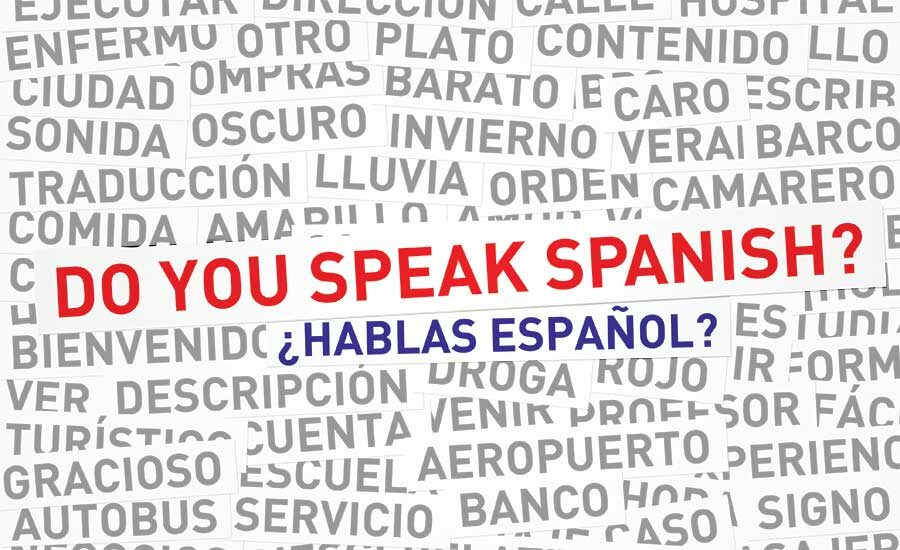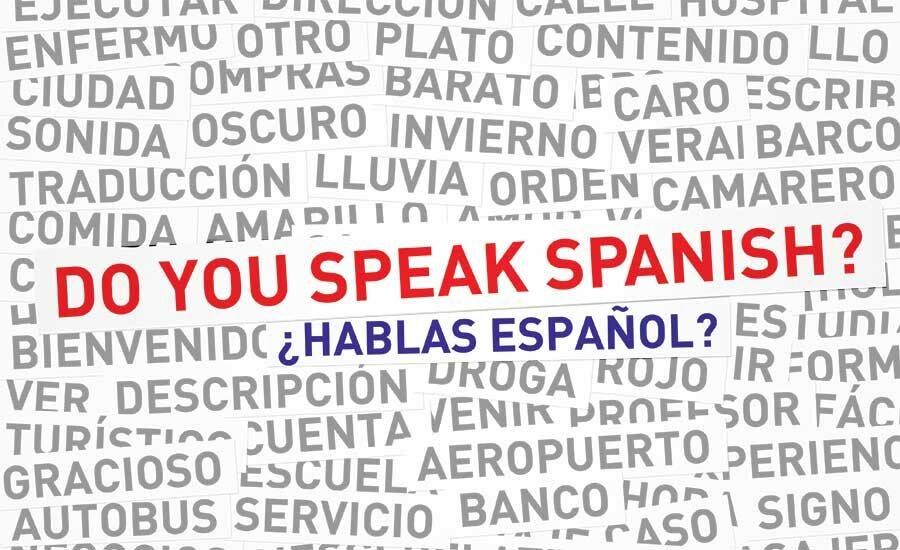Helping Hispanic Employees Help Themselves
A language barrier adds to the anxieties a worker feels because it limits their ability to communicate or express their feelings.

Don’t let the language barrier prevent you from making a human connection with the Spanish-speaking employees.

Don’t let the language barrier prevent you from making a human connection with the Spanish-speaking employees.


First generation Hispanics in the American workplace have a variety of complex issues that are worth noting by their English-speaking managers and supervisors. Although there’s no doubt that most Hispanics are much better off financially in the United States than they were in their old country, they’re still in the lower end of the earning spectrum. Many have related that they are almost always on “survival mode.” A young Hispanic employee once told me, “I determine my success by the maximum number of hours I can work each day.”
Hispanic employees have one of the strongest work ethics and like many hard working employees they’re driven by their desire to improve their financial standing in life. For many first generation, front-line Hispanics in the workplace, life is a matter of day-to-day meeting of basic needs.
First generation Hispanics have the lowest participation in retirement plans or in their company’s 401k plan. They find it hard to think about setting aside money for tomorrow when the financial struggle is here today.
Why is This Important?
It’s important because living in a constant cycle of survival mode affects the mental well-being of any employee. The sociologist Abraham Maslow, in his study of human needs and motivation, concluded that self-actualization, or reaching one’s potential, lies in first, satisfying the basic human needs such as food, safety and intimacy issues. Once those needs are met and secured, it becomes easier to concentrate on self-improvement goals.
But until those basic needs are met, there’s constant pressure and stress in just trying to make it. The language barrier adds to the anxieties associated with their financial standing because it limits their ability to communicate or express their feelings of living on the edge.
Managers and supervisors can play a key role by recognizing each individual’s unique abilities and contributions and by pointing out ways that may lead to advancement opportunities. They can raise the Hispanic employee’s level of confidence by challenging them to perform new tasks and by motivating them to learn new skills that may lead to job advancement, promotions and higher pay. Direct involvement and a regular dose of sincere praise for a job well done will pay big dividends in the long run for first generation Hispanics in the workplace.
Cultural, Communication Differences
Even if you don’t speak Spanish, there are many significant things that you as a leader can do to communicate with non-English speaking Hispanic employees in your workplace. There are some messages that surpass words. When you express your “good intentions” you go beyond language, you go directly to the heart of the person.
As leaders, we’re often stuck in front of our computer screens and we miss out on a ton of events and learning opportunities going on in the work area. It’s always a good idea to get out of your office and spontaneously walk into the worksite and start mingling. Make your visits count and take the time to let the employees know you’re interested in them as individuals. Try to make a human connection by calling them by their names. If their English skills are limited, ask brief questions they’ll understand. Have a little chat and shake hands. The point of your visit is to let them know that you recognize their contributions and you respect them as responsible, hard-working individuals.
Often, Hispanics in the workplace have expressed the “us” and “them” syndrome by stating that in addition to the language barrier, there’s a cultural and management barrier as well.
The language issue should not prevent us from interacting and forging a connection with the Spanish-speaking employees. It takes time and effort to build trust and confidence especially in the absence of a common language.
You, the leader, can help to bring down the language and cultural barriers by regularly keeping in touch with the employees in their work areas. A handshake, a warm smile and a pat on the back can speak more than a thousand words in any language.
Building Trust
I remember one of the recently promoted English-speaking team leaders saying: “I wish my people would feel comfortable enough to approach me when they need help. After all, that’s what I’m here for.”
He was referring to his Spanish-speaking team members and the struggles he was having in trying to reach out to them. He wanted to let them know that he could be relied upon as a source of support and someone they could trust. The frustration he felt was that despite his efforts, he felt that his message wasn’t getting through to them. They were still hesitant to seek him out.
It’s not easy for American managers to break through this hurdle. Just wanting to improve the workplace relationships with the Spanish-speaking employees is not enough. When I asked the manager to explain further, he remarked that he was definitely aware of a distinct separation, a line in the sand between him and the rest of the front-line Hispanic employees.
First generation Hispanic employees usually view upper management as being far removed from their daily challenges and problems. They perceive them as living in a different reality and, to a large extent this is true. Although this perception may exist in workplaces where there are no language or cultural differences, the suspicion and trust issues are more prevalent with first generation Hispanic employees.
It’s true that the language and cultural barrier does create a wide communication gap and it’s a fact that a common language unites. However, communication is more than just words, it also involves action.
Many American leaders readily accept the fact that there’s nothing they can do about the language and culture divide. They believe that their options are limited when it comes to breaking through the communication gap. That’s where the danger lies! As a result, they concentrate more on getting the product out the door, rather than on the people responsible for producing the product in the first place.
I advised this new team leader to not become discouraged and to not allow his frustrations to interfere with his noble objectives of wishing to forge stronger working relationships with Hispanic employees. I added that: every culture understands honest intentions. Persistence conveys a singular, unwavering focus to help your team member.
Making a Connection
Don’t let the language barrier prevent you from making a human connection with the Spanish-speaking employees. On the contrary, you can turn this apparent handicap into a wonderful opportunity to earn the trust and respect. Take this as a personal challenge by learning specific Spanish key words and sentences that develop healthy working relationships.
For example; you can learning Spanish greetings such as:
- “Buenos dias” (“Good morning.”)
- “Cómo está usted?” (“How are you?”)
- “Que tenga un buen día” (“Have a nice day.”)
You can interact with the employees with simple sentences such as:
- “Cómo se llama usted?” (“What is your name?”)
- “Gracias por su buen trabajo” (“Thank you for your good work.”)
- “Aprecio sus esfuerzos” (“I appreciate your efforts..--”)
You don’t have to be fluent in Spanish, a little working knowledge will certainly go far. You can also involve the employees by asking them to teach you many other words. This clearly demonstrates that you’ve taken the time and energy to learn and that it’s important for you to attempt to communicate with them. Don’t worry how you’ll sound. Of course you’ll speak with a foreign accent and you’ll probably sound strange to both yourself and the Hispanic employees. But that doesn’t matter at all. The important thing is that you’re trying and you can be sure that your efforts will be sincerely appreciated.
One of my most memorable experiences was when a production manager took the time to deliver an entire announcement in Spanish to the production crew. He translated the announcement into Spanish and practiced it numerous times before delivering it over the company’s public address system. This made an enormous impact on the production crew that they remembered.
The attempt to connect is what really matters. Your sincere efforts to communicate will create a lasting and positive impression on Hispanics in the workplace.
Looking for a reprint of this article?
From high-res PDFs to custom plaques, order your copy today!









